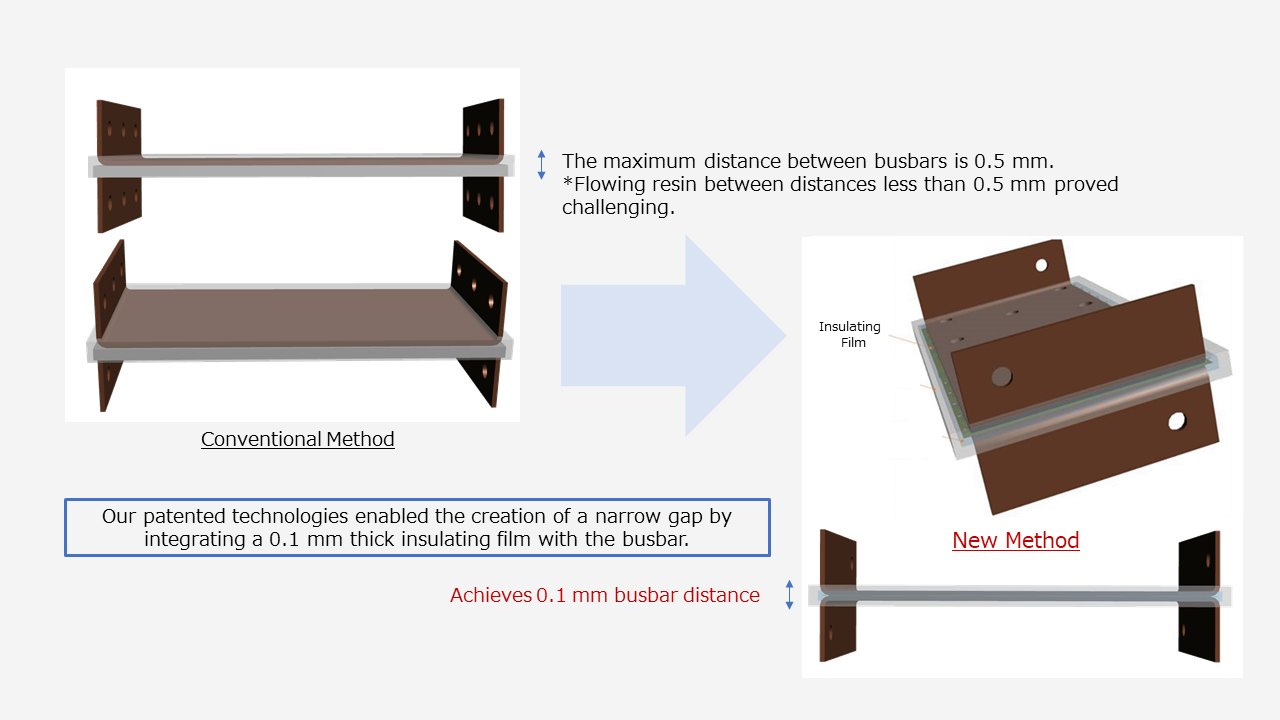

- Electrification
- Global
Revolutionizing Electric Vehicle Components: Unveiling the Patent Technology for Miniaturization and Lightweighting with Metal-Resin Integrated Molding
In the realm of electric vehicles, enhancing driving range is a significant challenge. At NAGASE, we are contributing to the improvement of driving range through the miniaturization and lightweighting of electric vehicle components, utilizing collaborative patented technology with our esteemed partner, Atecs CO.,LTD, known for its high technical expertise.
The Issue
Reduction of Size and Weight of Inverter Components
Enhancing electric vehicle (EV) cruising range is crucial for user convenience and a major challenge in EV development. While battery technology and energy regeneration optimization are common methods, miniaturizing and lightweighting EV components are also effective. Additionally, as the demand for high-voltage electric parts escalates for rapid EV charging, ensuring adequate performance despite downsizing and lightweighting becomes crucial. To address this, we've implemented strategies for high-voltage compatibility, such as transitioning to SiC—a material with higher performance than conventional Si—for inverters, a critical component in electric vehicles, while also mitigating inductance during inverter operation.
In recent years, with the rising expectations for a low-carbon society, there's a heightened demand for generating high voltage with minimal power consumption. This necessitates a reduction in the inductance generated during inverter operation.
However, achieving the low inductance required to meet end-user demands, particularly those of finished car manufacturers, through material or design changes in inverters and peripheral parts has proven challenging for our customers.
The Solution
Reducing Busbar Spacing through Joint Patent Technology with Atecs Co., Ltd.
To achieve lower inductance for these inverters, we've partnered with Atecs CO., LTD. to shorten the distance between multiple Positive-Negative bus bars, key components of the inverter. This reduces magnetic flux loops, thereby decreasing inductance.
Traditionally, the distance between bus bars has been limited to 0.5 mm due to resin fluidity, like Polyphenylene Sulfide (PPS), used for insulation between the busbars.
Here, we've pushed the limits by successfully developing patented technology to integrate and mold a 0.1 mm thick insulating film into the busbars, allowing for significant reduction in space.

Typically, placing a 0.1 mm insulating film between busbars risks misalignment or damage due to molding pressure. In our new method, we integrate the film with a resin frame during primary molding, ensuring a precise fit. By integrally molding this assembly with the busbars, we achieve a 0.1 mm spacing without compromising reliability.
NAGASE, alongside our skilled partners, addresses various electric vehicle needs, including performance enhancement like downsizing and lightweighting, to meet the evolving demands of the electric vehicle industry.